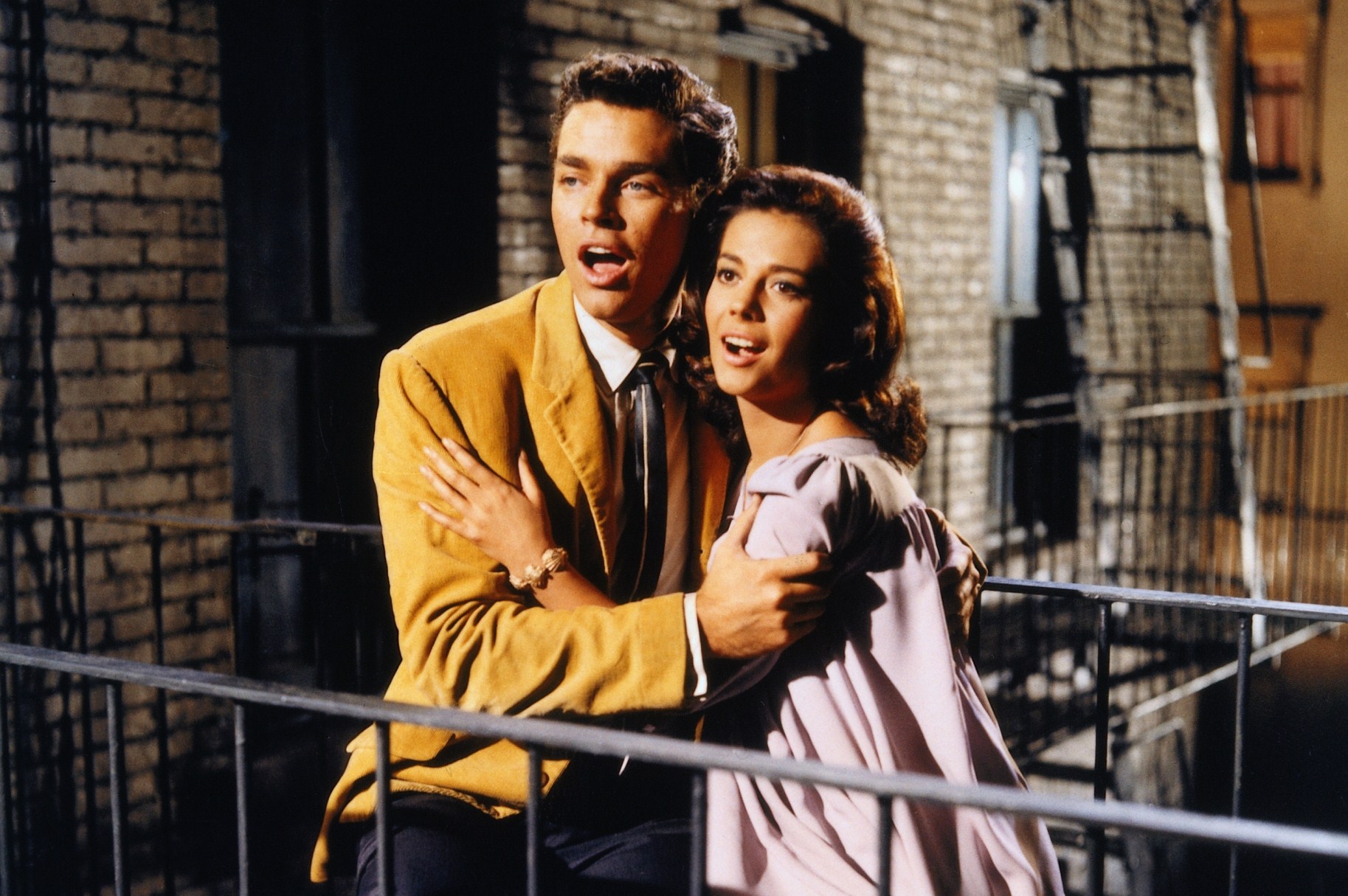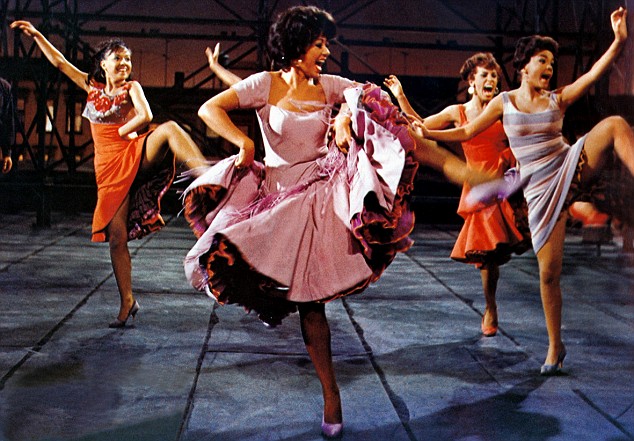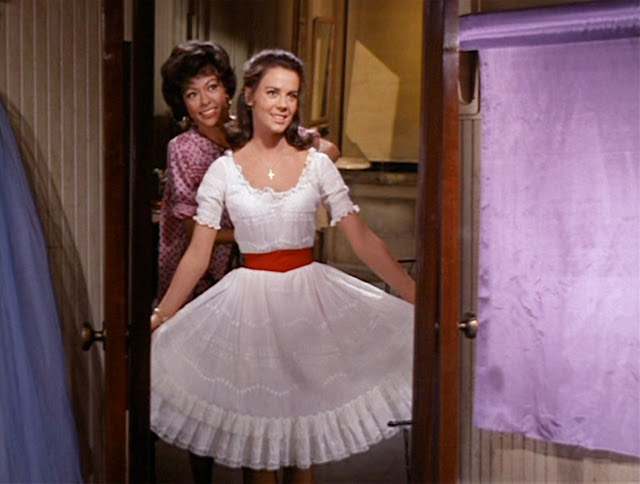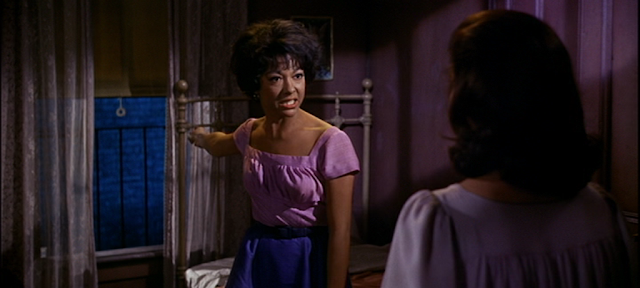This guest post written by Olivia Edmunds-Diez appears as part of our theme week on Interracial Relationships.
I grew up watching mainstream movie musicals. From The Sound of Music to Grease, my five-year-old self’s dramatic play ranged from pretending to be a Nazi to swiveling my hips singing along to “Look At Me, I’m Sandra Dee.” Oh, the joys of blissful ignorance. But the one movie musical I was not allowed to watch as a child was West Side Story. My mother always passed it off as “too sad and too violent.” As a stereotypical first born, I knew better than to question my mother’s infinite wisdom. It wasn’t until I turned fifteen that I finally sat down to watch West Side Story, and promptly cried through the entire second half, wailing about the deaths. My mother responded with a simple, “I told you so.”
Despite my strong emotional response, I would continue to watch West Side Story over the years. It quickly became one of my favorite musicals, and I would even see it on Broadway (with my mother!) when it was revived in 2009 with Lin Manuel-Miranda adding Spanish to both the book and lyrics. It is unsurprising that I would love this musical so much, for as a Latina theatre major, how could I resist the infectious score, vibrant costumes, and astounding choreography? But it wasn’t until college that I really started to look at the musical’s content, and quickly grew displeased with what I found. My favorite colorful musical about people who looked like me became a musical about racism, sexism, and colonialism.The love story between Tony and María, that I used to admire so, became depressing. After all, María’s life goes downhill once she meets Tony.
Colorism is very much alive in West Side Story, to the point that the film casts white actress Natalie Wood as the Puerto Rican María. Heaven forbid that an actual Puerto Rican be cast! Granted, this casting choice was partly related to Hollywood wanting a big name to draw bigger box office numbers. But because this Romeo and Juliet interpretation features a white boy and a Puerto Rican girl, there is the chance that their mixed-race union could result in mixed-race children. The horror! To ease the minds of Hollywood’s target white audience, Wood was considered a great substitute to allow white audiences to delve safely into the Puerto Rican barrios. After all, María isn’t really Puerto Rican, she’s just a white girl with an on-again off-again Puerto Rican accent!
Of the two featured Puerto Rican women, María is the virgin trope to Anita’s whore trope. María’s virginity is emphasized to make her a safe choice for Tony, lest our white knight be swept into a ‘dirty’ Puerto Rican’s bed. One obvious manifestation of this is her white dress for the dance. Despite María’s wishes for a shorter red dress, like her role-model Anita, Anita ensures María’s virginity by keeping the dance dress white and at a ‘respectable’ length. Anita’s hard work pays off as the white knight Tony only has eyes for María, who visually stands apart from the crowd.
One alarming component to West Side Story is that María does not feel pretty until noticed by a white boy. This is unsurprising, given María’s wish to fit in with mainstream American culture. Living under her older brother’s protective gaze, María longs for independence. Much like Cinderella, all she really wants is a night off and a fancy dress. María is largely uninterested in boys, shunning her brother’s chosen mate for her, until she stumbles upon Tony at the dance. Suddenly, María’s independence flies out the window. Over the span of 72 hours, María gets ‘married’ in an adorable play-wedding that quickly turns serious, has sex for the first time, and becomes a widow.
Within West Side Story, everyone stands against María and Tony’s interracial relationship. Anita makes it clear that she thinks María is out of her mind, and Tony’s boss, Doc, tries to persuade Tony that his interracial relationship will never work. It is interesting that this is one clear distancing move from Romeo and Juliet, in which the Nurse and Friar Lawrence quickly come around to support the couple. But when race enters the picture, Anita, Doc, and the other characters cannot support María and Tony. In the song “Somewhere,” our main love duo sings about a magical place far away where they can be together. They plan to run away to this “Somewhere.” But it is clear by the end of the film that “Somewhere” does not exist, as María and Tony will never be free from racism.
West Side Story could be read as a warning to Latinas: stay away from white men. If María listened to her older brother, obeying his wish to keep her obedient and virginal, María would be safe and free from grief. This notion is exceedingly disappointing, especially considering that there are not many Latina main characters in Hollywood movies. West Side Story came out in 1961, and remains celebrated and remembered to this day. The take-away, then, for Latinas, is to heed our families’ advice and stay within our culture. Maybe someday, interracial stigma will dissipate. But until then, “Somewhere” seems to be the only place interracial couples can live happily.
Olivia Edmunds-Diez is a senior at Northwestern University, double majoring in Theatre and Gender and Sexuality Studies, with a certificate in Theatre for Young Audiences. She loves cats, Beyoncé, and spends her free time listening to the Hamilton cast recording on repeat. You can find her on her blog, Tumblr, Twitter, and Instagram.








